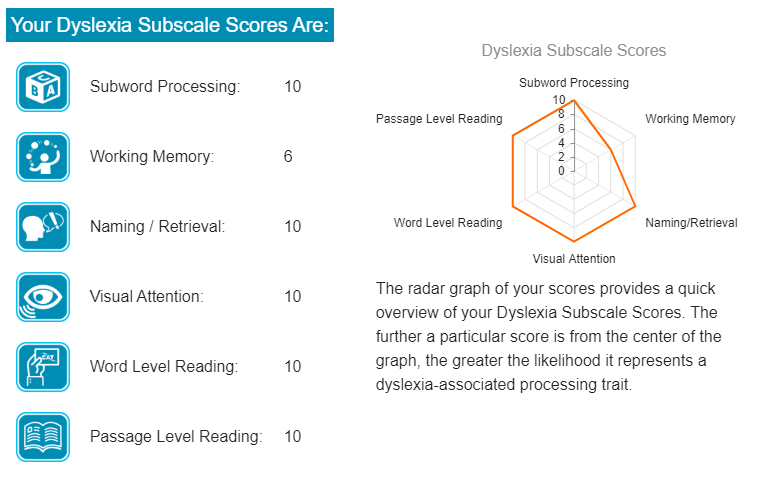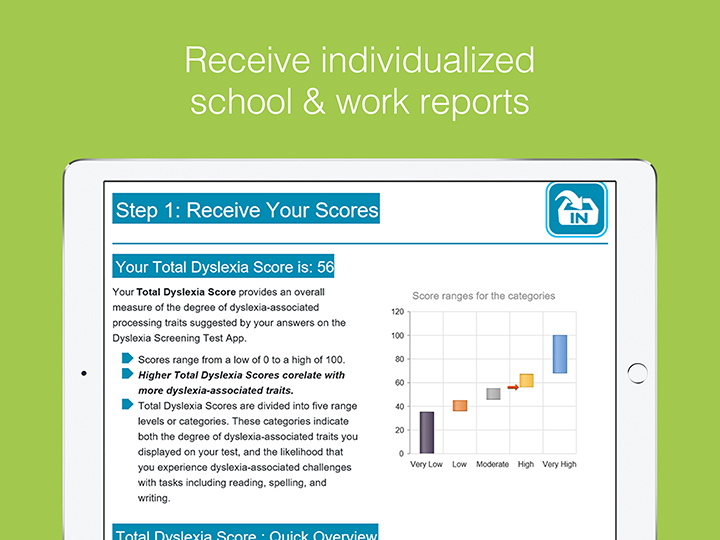 After writing The Dyslexic Advantage and co-founding this non-profit, why did you decide to create this innovative dyslexia screening app?
After writing The Dyslexic Advantage and co-founding this non-profit, why did you decide to create this innovative dyslexia screening app?
After 20 years working in this field it’s become clear that the biggest problem facing dyslexic people is access. That includes access to good testing that will identify the nature of their challenges as soon as they become apparent; access to information about appropriate interventions that will help them overcome their areas of challenge; and access to information about personal strengths that they can use to find success.
Our goal was to put high quality dyslexia screening and information on how to take charge of your own or your child’s challenges within everyone’s reach. One of the biggest problems out there is the length of time it takes between the point when dyslexia-related challenges are first noted and when testing is done and intervention begins. We’ve done several surveys on this and the data is very clear: important social and emotional problems begin to appear in as many as half of dyslexic students in as little as a month after they begin struggling, and
by half a year almost all students experience such problems. Yet in our studies almost half of dyslexic students had to wait more than 2 years to receive appropriate evaluation after their first signs of challenges. We wanted to create a situation where we could essentially eliminate that waiting period and help individuals right away understand the nature of their challenges and what to do about them. There have been an explosion of new dyslexia laws and a lot of energy and funding is going into early literacy screeners for children before they enter school.
Many screeners are aimed at children beginning at age four or five, or in some cases even earlier. Your screener starts at age 7: why?
The main reason was that we were very focused on creating a test that was highly accurate. In many years of testing children we’ve found that before the age of 7 it’s very difficult to get high quality results with many children, due to the tremendous variability in the readiness of younger children to engage in a serious way with the testing process itself. We’re very sympathetic to the reasons for wanting to test younger children, and we agree that it’s worthwhile to attempt such testing in order to get as many students as possible on the right path quickly; but we also want to be realistic about the limitations of early testing. Most of the screeners used at earlier ages are able to correctly identify about 70% of dyslexic students, but they miss almost 1/3 of dyslexic students, and about 1/3 of the students they identify are not actually or not simply dyslexic. Our goals were both to develop a screener that would be much more accurate in assessing dyslexia risk, and that would be usable for very young children, and also for individuals throughout the life span; because as of course there are many folks out there who’ve already passed through the early elementary years without being correctly identified, and are still in need of screening.
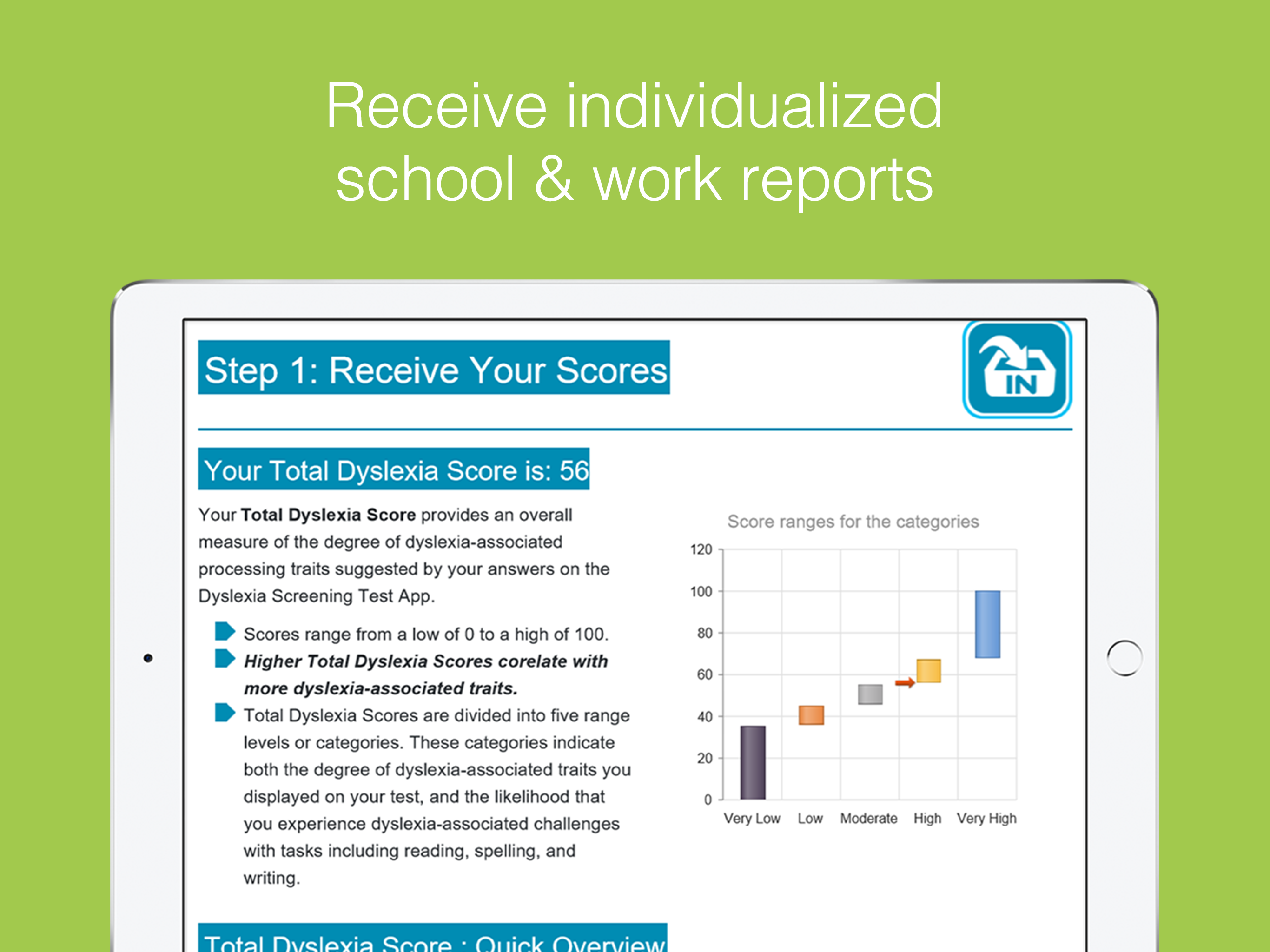
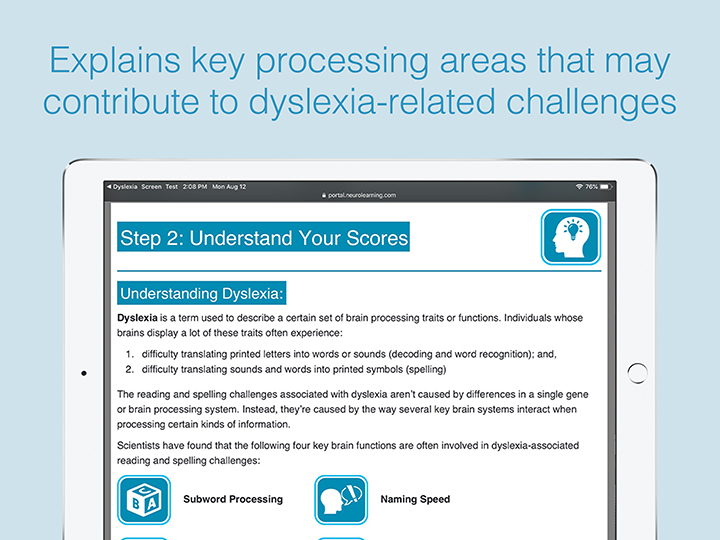
LEARN MORE ABOUT THE NEUROLEARNING DYSLEXIA APP HERE
How else does your screener differ from others?
In both the depth of the information we provide about the factors contributing to the dyslexic challenges, and the specificity of the recommendations. Our screener provides both an overall measure of dyslexia risk, and also a series of subscale scores that show which processing features are contributing to that risk. Research has shown that dyslexic reading and spelling challenges aren’t caused by a single gene or processing system, but result from the interactions of several brain processing systems, including phonological (word sound) processing, working memory, naming speed, and visual attention. By measuring each of these functions we can more accurately see where challenges are arising, and what sorts of interventions might be more effective, and we use this more specific information to create individualized and detailed reports.
Do you need any specific background or training to be able to administer or use the screener?
No. The screener has been designed to be fully self-explanatory. We do recommend that children up through middle school have an adult proctoring the exam to make sure they’re paying attention and not having problems, but there are no other requirements. We also have an extensive set of help videos to provide guidance at using the test and accessing the reports, and we’ll also soon have an extensive set of videos explaining and providing background for each section of the report. Our goal was to make taking the test and understanding the results accessible to everyone.
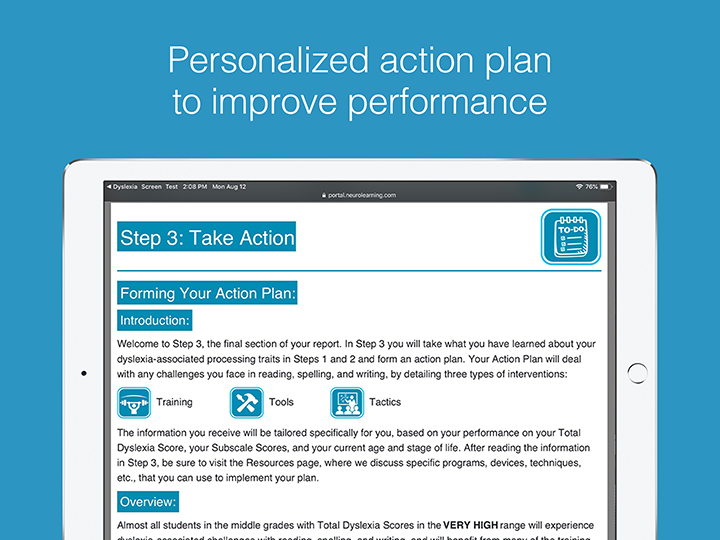
Where can you go to learn more?
Our website is Neurolearning.com. The app is also currently available only on iPad, and you can learn more about it in the iPad app store.
